Cross-Curricular School Trips To Stuttgart
Stuttgart, the capital of southwest Germany’s Baden-Württemberg state, is well known as a manufacturing hub. Mercedes-Benz and Porsche have headquarters and museums here. This attractive city is also a rich cultural centre filled with green spaces. Surrounded by hills and vineyards, Stuttgart is known for its wines and local gastronomy. This is a perfect location for those interested in design and technology, art and architecture, food technology and history. MFL students can improve their German language skills through the discovery of local culture including a visit to the Mercedes-Benz Arena, home to VfB Stuttgart. The city offers a perfect base for a rich Cross-Curricular cultural experience.
Highlights
Automobile history at the Mercedes Benz and Porsche Museum
Abundant Art and unique architecture
Chocolate delights at Ritter Sport
Bundesliga team VfB Stuttgart - home stadium
Hardenhuish SchoolWonderful support throughout the trip and excellent knowledge of the area visiting
Suggested itinerary
What's included*
*Please note, excursions and entrance fees where applicable are not included in typical price – contact us for more details
Recommended excursions
At the heart of Stuttgart is Schlossplatz, dominated by the New Palace. The city is a cultural centre boasting an excellent Art Museum, a History Museum in the Old Palace and the largest multi-genre theatre in the world. Surrounded by vineyards, this gastronomic centre has a colourful Art Nouveau Market Hall, a Wine Museum and even a Pig Museum! Popular parks include the Schlossgarten, Rosensteinpark and Killesbergpark. The Wilhelma Gardens has one of the largest zoos and botanical gardens in Europe.
This excellent museum presents the history of the automotive industry up to the present day. Spanning 125 years, the 160 vehicles displayed over 9 floors are complemented by images of key historical events of the era in which they were built. The collection is housed in a state-of-the-art futuristic building. Stand out exhibits include Gottlieb Daimler’s motorized carriage, the world’s first four-wheeled automobile, the 300 SL Coupe ‘Gullwing’ dream car of the 1950s, and the Mercedes Benz W196 2.5 litre which set the standard for racing cars. The exhibition also looks at the future of motor transport.
The glasshouse where Gottlieb Daimler and Wilhelm Maybach constructed the first-ever small, high-speed four-stroke petrol engine in 1885 is now a much-visited attraction. The garden house on Daimler’s estate was converted into a workshop where the two men worked on a secret plan to develop a movable universal drive system for land, water and air vehicles. Their development of a second experimental engine, smaller and lighter than the first ‘the Grandfather Clock’ became the model for many subsequent engine builders. Daimler and Maybach fitted the engine to a specially converted carriage, and this was the birth of the first four-wheeled car.
The futuristic Porsche Museum is one of the city’s architectural highlights located on Porscheplatz. The museum houses 80 of the iconic brand’s most famous road and racing cars, including classics such as the 356, 550, 911 and 917. The original Beetle designed by Professor Ferdinand Porsche is also on display. Another highlight of the exhibition is the Pink Pig racing car that took part in the 24 Hours of Le Mans endurance race in 1971. The interactive 12m long Porsche Touchwall covers nine decades of exciting automobile history.
Take a journey through space and time and into the mysteries of astronomy through State-of-the-art technology at the Carl Zeiss Planetarium.
Fascinating constellations, far-off planets and a view of the Earth from outer space will take your breath away! Equally unforgettable are the futuristic laser shows with their stunning combination of music and visual effects.
The 217m tall TV Tower opened in 1956 and was the first-ever tower constructed from reinforced concrete. Designed by a local engineer Prof Fritz Leonhardt, his idea was to create an elegant concrete needle rising from the forest which would also be an attraction with a viewing platform and restaurant. The Stuttgart TV tower became a prototype for other such towers all around the world. The viewing platform offers unrivalled views over the city, the vineyards and the Swabian countryside.
Situated in the city centre on the Schlossplatz, the spectacular glass cube of Stuttgart’s Art Museum is an architectural landmark. There are great views of the city from the glass galleries. The Museum has a permanent collection of modern and contemporary art with two or three large special exhibitions annually. At the core of the permanent collection are works by the Swabian Impressionists, Adolf Hölzel and his followers, the world’s most important Otto Dix collection as well as the contemporary art of the region.
The imposing neoclassical 19th-century building of this renowned art gallery houses works from the 14th to the 19th century. The interconnected New State Galley, designed by British architect James Stirling, is dedicated to the art of the 20th century. Since the end of WWII, the emphasis of the collection is on classical modernism and contemporary painting and sculpture. There are groups of works from different stylistic movements including “Fauves”, “Brücke”, “Blauer Reiter”, “Cubism”, as well as the excellent works by individual artists such as Picasso and Beckmann.
Dating back to the 10th century, the castle was enlarged in the 14th century when the counts of Wuerttemberg moved their residence to Stuttgart. In the 16th century, Duke Christoph von Wuerttemberg expanded and redesigned the castle in the inner court in the renaissance style. Reconstructed following devastating damage in WWII the Old Castle is home to the Wuerttemberg State Museum with art treasures and artefacts of the Wuerttemberg Kingdom including the crown and sceptre. The museum places an emphasis on showing the history of the State from the Stone Age through the Celts, Romans, Alammani up to the Middle Ages, Baroque and Modern times.
The Mercedes-Benz Arena is home to VfB Stuttgart, with a capacity of over 60,000 spectators. The Stadium underwent renovation for the 2006 World Cup when it hosted 6 matches. In 2011, the stadium underwent further renovations to its present form and was renamed the Mercedes-Benz Arena. The tour includes the dressing room, players’ tunnel, dugouts, VIP facilities and press areas.
The small town of Waldenbuch, close to Stuttgart, is the home of the well-known German chocolate brand Ritter Sport, known for its square bars in multiple varieties. The multi-sensory chocolate exhibition informs the visitor about the journey from cocoa bean to chocolate, some of the manufacturing processes used to make the many Ritter Sport varieties and why Ritter Sport is square. Browse through the ChocoShop and try new varieties at the Chocobar. The Ritter Sport Museum houses a fascinating collection of contemporary geometric and abstract art in a building designed by the Swiss architect Max Dudler. Everything revolves around the square.
Located in the pretty wine-growing village of Stuttgart-Uhlbach in a former wine-press building, the museum covers the history of 2,000 years of viniculture in this region. It’s possible to take a tour of the vineyards, see the views from the hilltops and the Burial Chapel of the House of Württemberg. The mausoleum was built by King Wilhelm for his wife Queen Katharina.
The Weissenhof Estate was built on a hillside outside Stuttgart in 1927 as part of an exhibition aimed at finding contemporary answers to the question of ‘How to Live.’ The exhibition brought together a number of Modernist Architects including Le Corbusier, Mies van der Rohe, Gropius and Scharoun. The double House by Le Corbusier is a Unesco World Heritage Site and is home to the Weissenhofmuseum. The Museum is divided into two parts, an exhibition on the history of the entire Estate, and the Le Corbusier’s house as it was in 1927 with Le Corbusier’s colour scheme and some of the interior design.
The baroque town of Ludwigsburg lies just 14kms North of Stuttgart. The impressive Residential Palace, built for Duke Eberhard Ludwig von Wuerttemberg, was completed in 1733. Constructed under Donato Giuseppe Frisoni, the Palace offers magnificent interiors in Baroque, Rococo and Neoclassical style. With its rich interiors, plasterwork, paintings and frescos, Ludwigsburg Palace has been called the “Swabian Versailles”. The Palace also has a Ceramics museum, Fashion museum, Children’s interactive museum and a Baroque Art Gallery.
This is Germany’s oldest Theme Park with over 100 attractions including roller coasters and water slides. Highlights include the catapult roller coaster ”Karacho“, the wooden roller coaster ”Mammut“, and the ”Höhenflug“ – a turbulent flight duel.
Stuttgart’s Christmas Market is located against the backdrop of the Old Palace. With over 280 decorated wooden chalets it is one of the largest in Europe. The market also has a Winter Wonderland on Palace Square.
Enjoy the historic baroque Christmas Market at nearby Ludwigsburg with more than 170 stalls set in the market square. The illuminated baroque churches add to the beautiful scene.
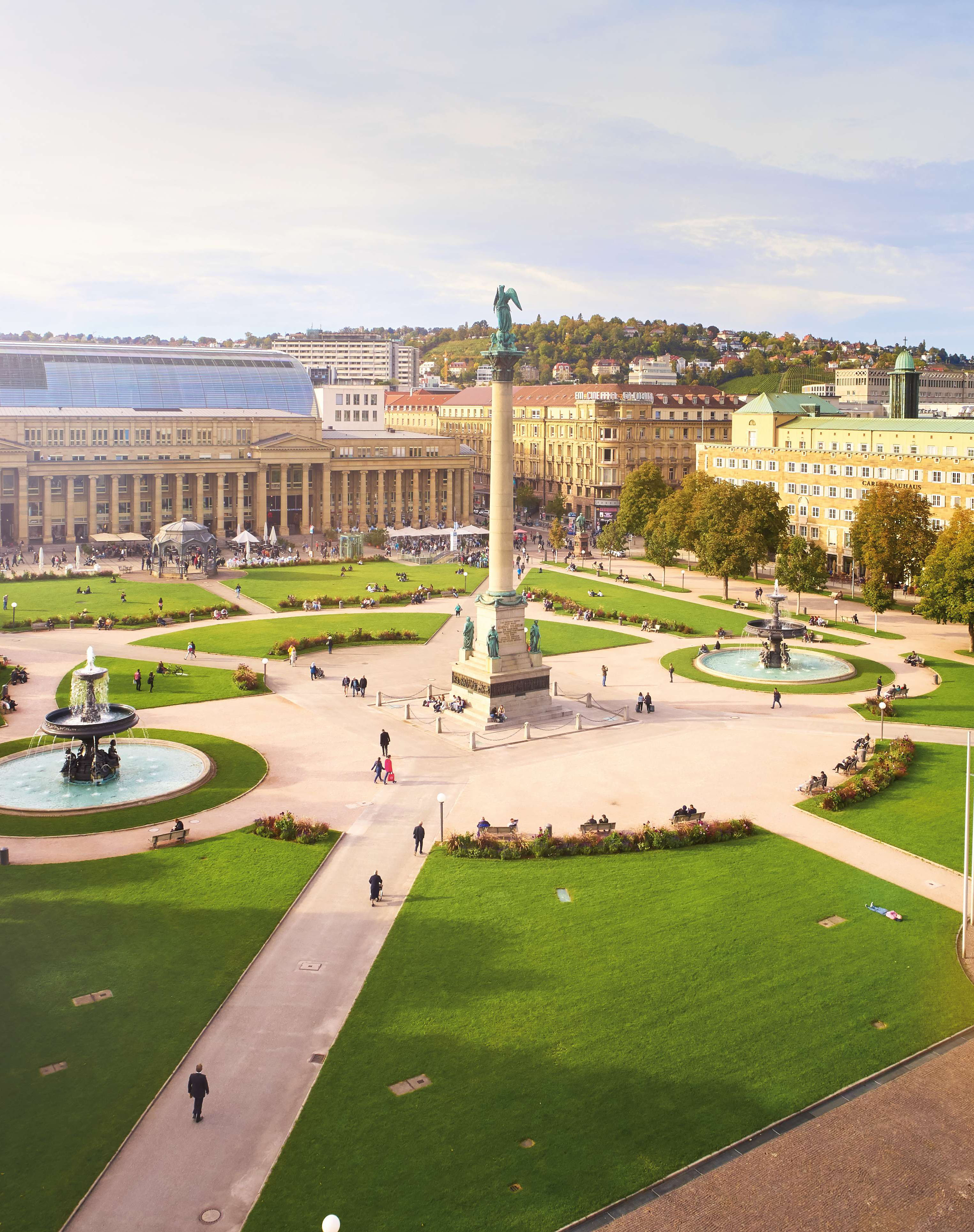
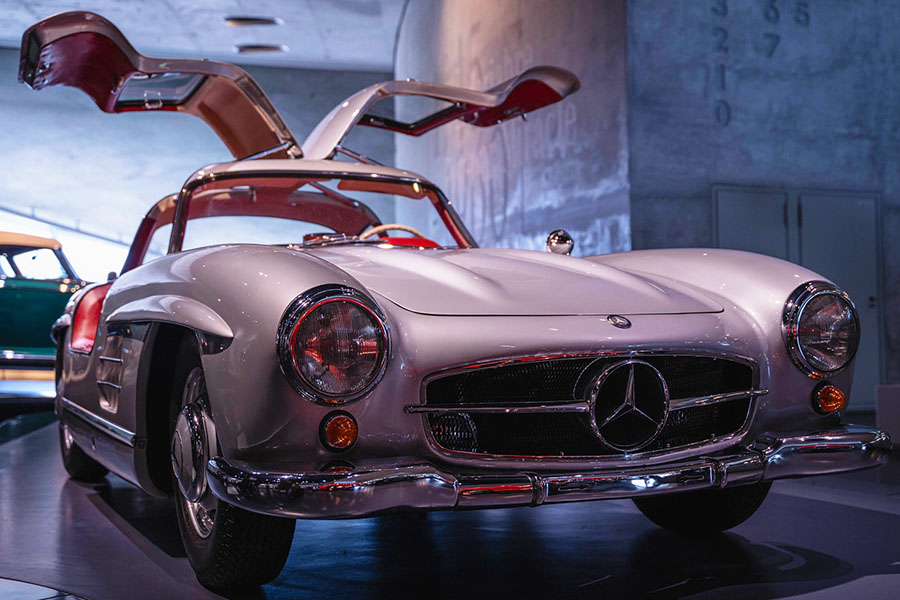
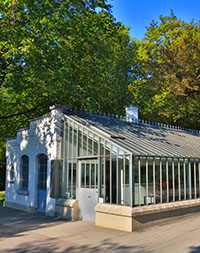
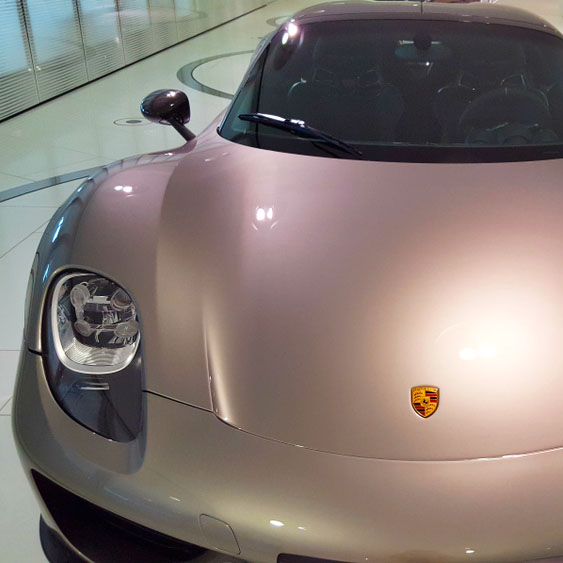
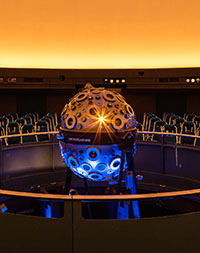
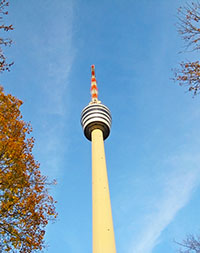
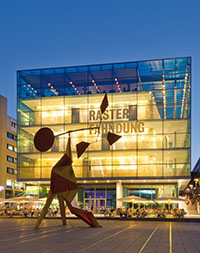
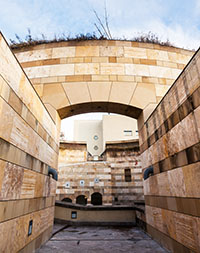
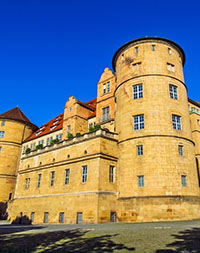
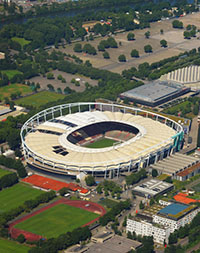
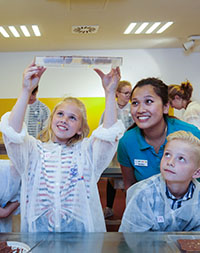
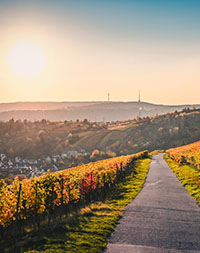
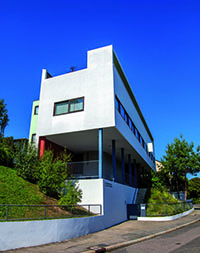
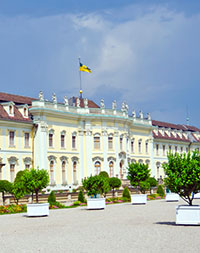
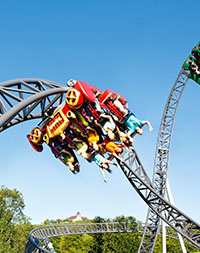
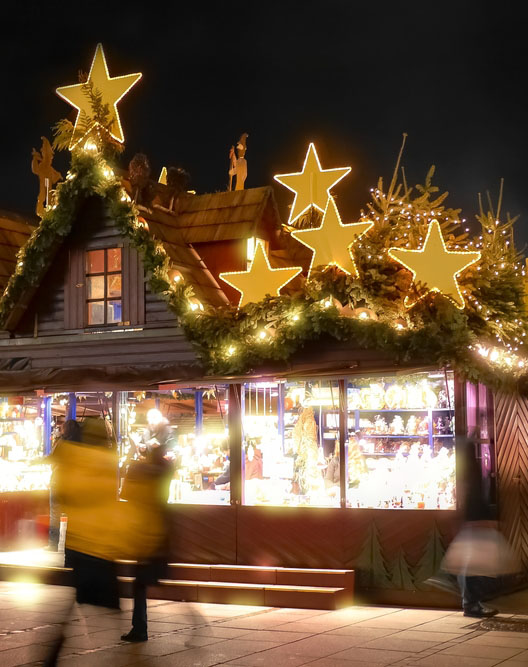
Typical accommodation
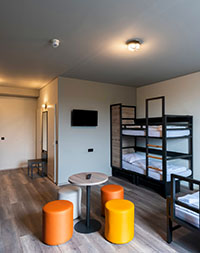
Why groups like it:
Facilities:
Learning outcomes (Schools only)
Subject focus
Students can:
- Experience learning outside the classroom in another country – the language, culture, industry, history, art, architecture and geography
- Practise speaking a foreign language
- Consider the implications of the global market for businesses in the local economy
- Consider the social and environmental considerations in production and location
- Build confidence and learn to value the skills and techniques needed for personal and team success
- Broaden the mind with the study of another culture
- Discover, explore and have fun with fellow students and teachers
Student outcomes
Students will have had an opportunity to:
- Visit a foreign country and experience another language and culture
- Gain independence and self-confidence
- Strengthen existing friendships and make new friends
- Understand more about local and global industry, history, art and architecture
- Learn about local produce
- Understand personal organisation, co-operating and working with others in a variety of environments



